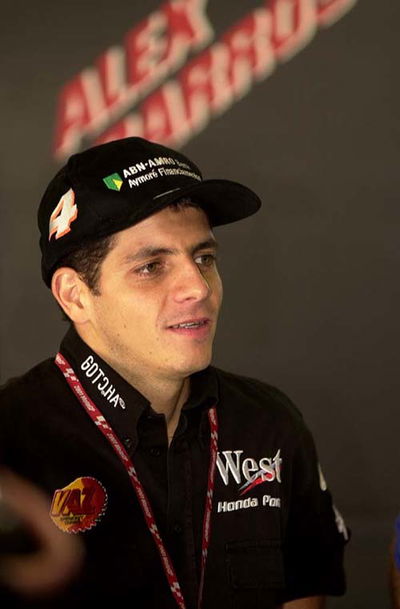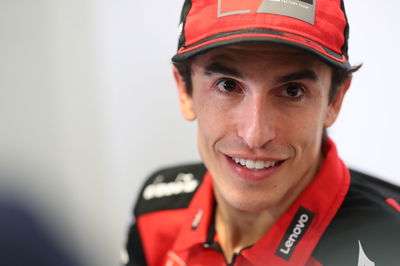Yamaha Catalunya MotoGP set-up report.
For Yamaha, Barcelona will prove to be the ideal testing ground for the new generation YZR-M1 chassis, which was first introduced in Mugello on May 31, and proved to be the unit of choice for both Marlboro Yamaha Teammates throughout the rest of the racing weekend. This time, however, for the sixth round of the 2002 championship both Max and Carlos will have all four race bikes fitted with the latest generation chassis, first tried and used at Mugello when they only had one unit apiece.
For Yamaha, Barcelona will prove to be the ideal testing ground for the new generation YZR-M1 chassis, which was first introduced in Mugello on May 31, and proved to be the unit of choice for both Marlboro Yamaha Teammates throughout the rest of the racing weekend. This time, however, for the sixth round of the 2002 championship both Max and Carlos will have all four race bikes fitted with the latest generation chassis, first tried and used at Mugello when they only had one unit apiece. They also arrive with the added advantage of having further explored the full potential of the new Deltabox frame after recently completing a two-day team test at Valencia, on June 6-7.
As a MotoGP circuit Barcelona offers a main straight capable of encouraging speeds exceeding 300kmh, and is completed by a sequence of long radius, medium/high speed sweepers and two tight hairpin left-handers. In some regards Barcelona resembles Jerez (Spain); with bumps an issue for riders on the entry to the hard braking turns. But the combination of long radius corners riddled with a variety of cambers makes it more demanding on chassis balance than any other circuit visited so far this season.
Front-end feel is the key to success here, and was the one area the former M1 chassis was lacking, to some extent, during the Barcelona IRTA test, held in March of this year. It is in this area that the latest Deltabox offering promises the greatest progression, especially on the long continuous sweepers. Its improvement in feel, and a better balance in forward and rearward pitching, has inspired confidence in the front-end, and has proven beneficial exiting the higher speed corners - ensuring the bike holds the racing line under hard acceleration - as well as entering the tighter hairpins.
Combined with the latest electronic engine-braking system, first used leading up the French MotoGP, Checa and Biaggi feel the new chassis enables them carry a higher corner entry speed, and provides them with the opportunity to trail brake deeper into the tighter turns - the electronic engine-braking system offering the stability, while the chassis provides the enhanced turn-in characteristic. In addition, the latest frame design has also allowed the M1 fuel tank to be made narrower; becoming less restrictive and in turn increasing the ability for the rider to move their body weight to adjust the finer chassis balance.
All this will allow the chassis geometry to be set a little more aggressive than that of the YZR500, although it will still need to be balanced to offer the drive off the side of the rear tyre while exiting the long sweeping turns; such as the long right-hand run onto the front straight, which determines the eventual top speed and slipstream potential.
For this reason - the four-stroke's top speed superiority - the base chassis set-up for the YZR500 will resemble what was run at Jerez more than the M1, as stability under brakes is where the two-stroke will have a greater chance of holding the might of the four-strokes at bay. The rear ride-height of the YZR500 will be set a little lower, to minimise weight transfer under heavy braking, which can lead to the rear of the bike skipping at the crucial point when riders are tipping into the turn.
Helping will be the higher rate fork springs, which when combined with the right compression damping will prevent the front of the bike diving excessively under brakes. But the difficulty will be to find a set-up that will compensate for the rough track surface, offering feel, during the point when the forks are under the strain of those high braking forces.
With the track surface often dirty, grip will be an issue at Barcelona. For this reason teams are likely to start with a slightly softer set-up to compensate, but as the track becomes cleaner during the course of the event it will be firmed up to suit the ever-improving laptimes. Meanwhile, those long radius sweepers mean that the ability for the 500 to hold its line must also be considered, as this will determine the eventual top speed just as much as the outright horsepower of the engine. This is where stability under brakes and the ability to hold a tight line lead to a compromise in chassis set-up, more so than with the four-strokes.
The YZR500s outright power delivery will be tuned to produce a strong but meaty curve while still providing the rider with a predictable throttle response. The latter is all-important if the rider is to get off the turns confidently after working the sides of the tyres on those long corners. Then there's the two first gear left handers, which will require the right gearbox ratios as well as a precise throttle action and a linear power delivery to ensure the riders can find the balance between driving and sliding out of the turn.











